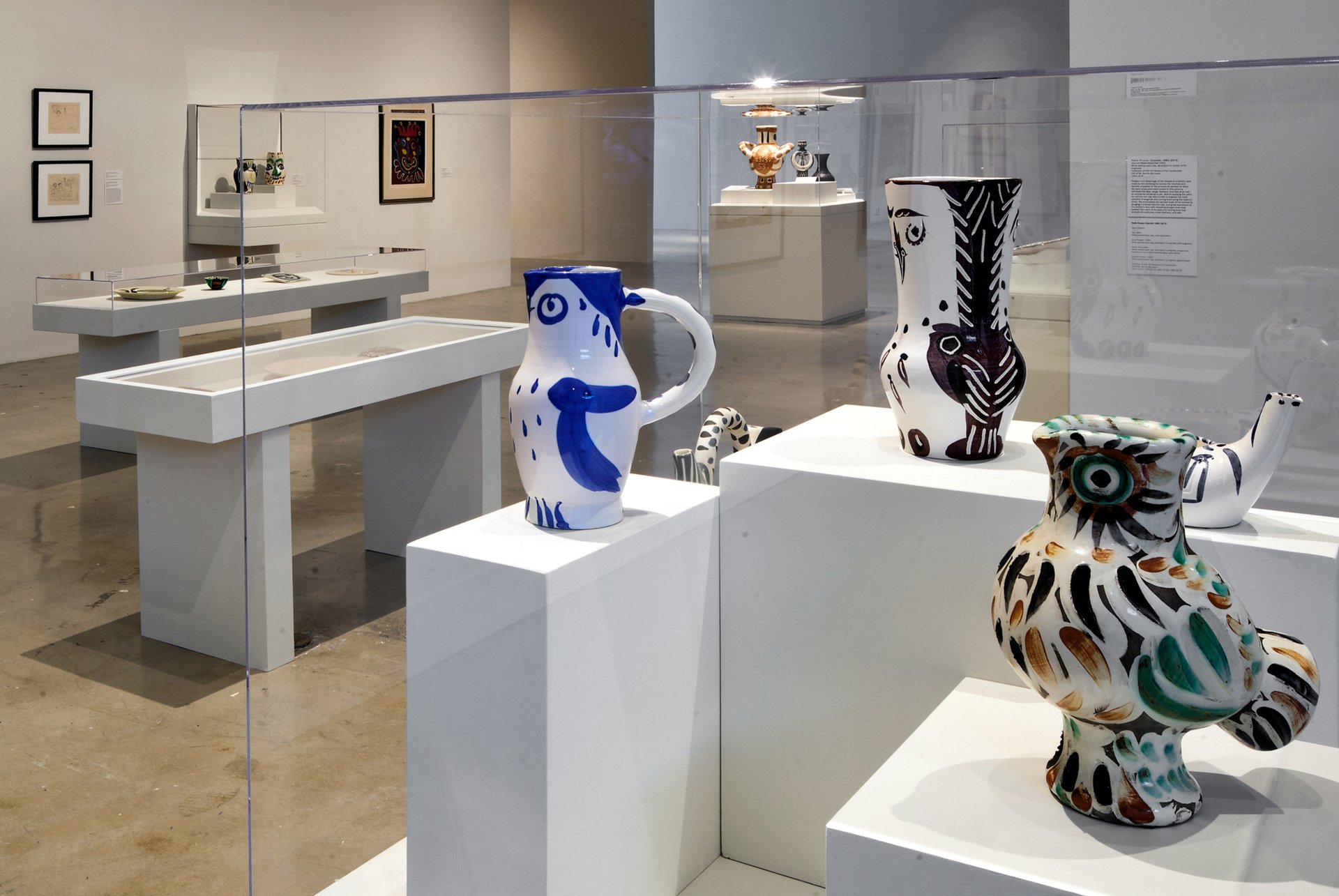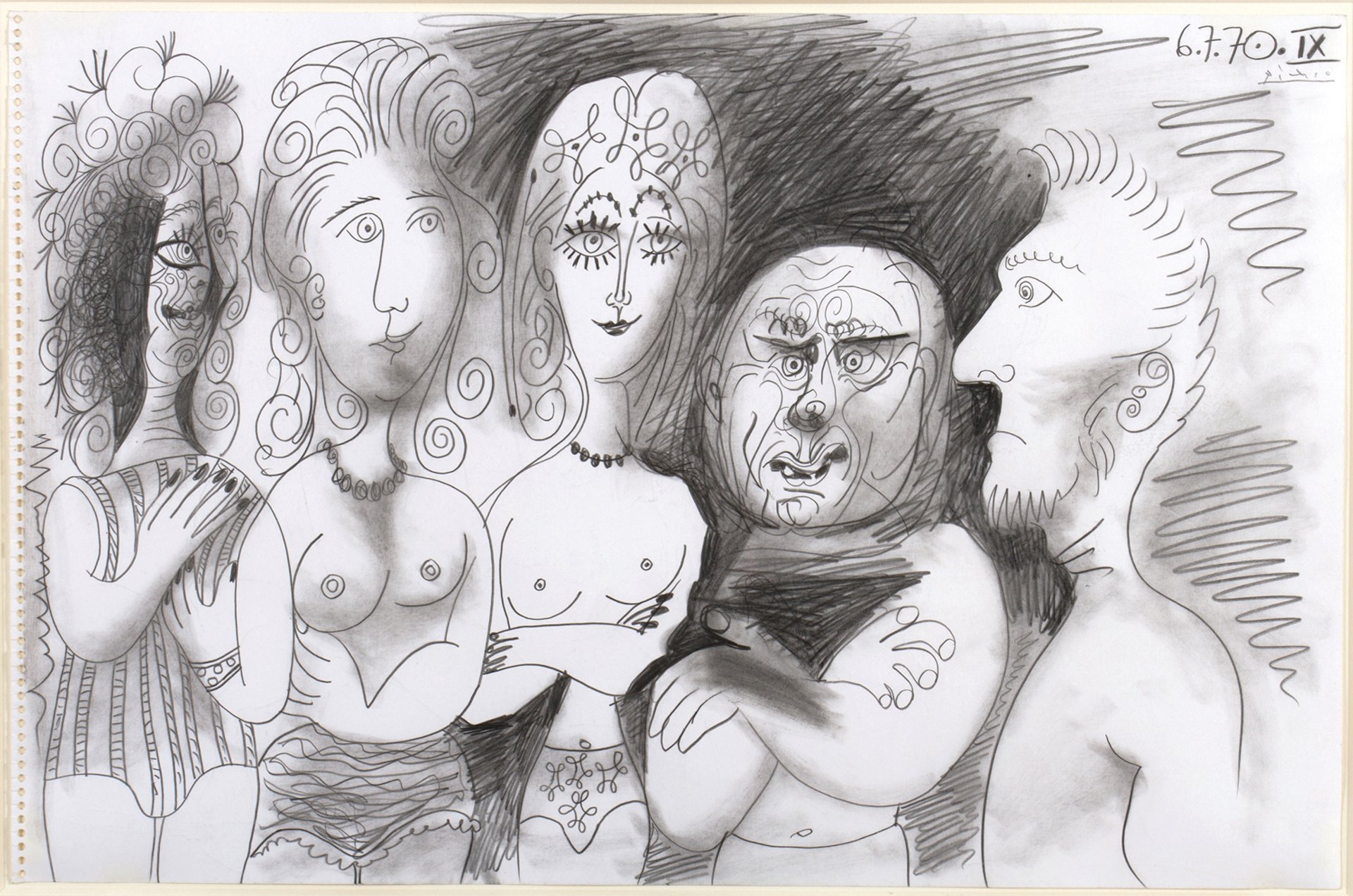Pablo Picasso, who died in 1973, remains all-powerful in the art world. His paintings command stratospheric prices; most art-world professionals can remember where they were on hearing of the $179.4m achieved at Christie’s New York in May for the 1955 canvas Les Femmes d’Alger, Version “O”. Meanwhile, museum shows guarantee box-office success: visitors to Picasso Sculpture at New York’s Museum of Modern Art (until 7 February 2016) require timed tickets.

During Art Basel in Miami Beach, a selection of Picasso’s painted ceramics and graphic works are on show in nearby Fort Lauderdale’s NSU Art Museum (until 10 January 2016), while at the fair, the Spanish master’s work can be found on the stands of Hammer Galleries (H4) and Edward Tyler Nahem (H8).
Picasso was a one-man industry working in a variety of media. “He was innovative in his handling of materials as well as in the content of his work, as can be seen in his multi-state prints, his experiments with photography and his figurative sculpture created from found objects. He found inspiration in the discoveries that resulted when he pushed the media,” says Janie Cohen, a Picasso expert who is the director of the Fleming Museum of Art at the University of Vermont.
Picasso experimented with photographic printing techniques in 1959, co-producing a series of photograms with André Villers. These cut-outs on bromide paper incorporate Picasso’s figurative faces, animals and forms, together with masks and wild beasts. A work from the series was consigned to the Paddle8 online auction house in February 2014, with a low estimate of $1,000 to $2,000.
Picasso pushed his brand in other ways, creating, for instance, three headscarves that were all manufactured for non-profit purposes, says the textile historian Richard Chamberlain. In 1950, the artist created a design of sunflowers and bulls in the guest book of the newly established Institute of Contemporary Arts (ICA) in London. To raise funds for the institute, Picasso gave its director, Roland Penrose, permission to use the graphic for a limited-edition silk screen of 100 scarves, undertaken by the scarf brand Ascher, and 100 prints on paper. “The scarf is rare, turning up only a handful of times. A current approximate valuation would be in the region of £4,000 to £6,000, in perfect condition,” Chamberlain says.
Paintings as a springboard The artist also created a scarf design, incorporating a dove of peace, for the Third World Festival of Youth and Students in Berlin in 1951. “The original scarf printed on calico sells for more than £3,000, in an unfaded, untrimmed condition,” Chamberlain says. In a canny move, Picasso allowed the graphic to be used for various other rallies and peace events.
The artist also saw his paintings as a springboard for other items. Between 1955 and 1975, the US billionaire and philanthropist Nelson Rockefeller commissioned 18 tapestries modelled on some of Picasso’s most famous paintings. Fifteen are housed at Pocantico, the Rockefeller family estate in the Hudson River Valley, New York State: 12 are in the estate’s Kykuit residence and three are in its conference centre.
Cynthia Altman, the curator of the collections at Kykuit, says that Picasso was closely involved in the manufacture of the tapestries. “Picasso approved each one before it was woven, and the cartoon, and then approved the final weaving. Editions of three of each composition were intended. Tapestries after Picasso designs were also woven by Marie Cuttoli. All of the 18 woven for Nelson Rockefeller were completed by Jacqueline de la Baume-Dürrbach, of the atelier Cavalaire [in southern France],” she says.
The New York-based dealer Jane Kahan, who specialises in “modern master tapestries”, says that Picasso’s are undervalued. “Only museums and the most brilliant and true connoisseurs have ever had these works. For that reason, they rarely reappear on the market,” she says, adding that estimates are often wayward.
Miami Beach collector
Kahan sold the tapestry of Les Demoiselles d’Avignon, which was commissioned by Rockefeller in 1974, to the late Los Angeles-based collector David Wolper in 1998. Kahan owns another tapestry, Femme Sur L’Echelle (La Fermiere) (1955), of which there are three editions; one hangs in the United Nations headquarters in New York. “This is one of the most important works of Picasso left in the world. And it will be a fraction of the price of the [record-breaking] works by Picasso recently sold at auction. Prices for the artist’s ceramics are even more complex and capricious,” Kahan says.
Fifty ceramic bowls, pitchers and plates, dating from 1947 to 1971, donated by the Miami Beach-based hotelier Bernie Bercuson in 1991, are on show at the NSU Art Museum alongside some of Picasso’s most important works on paper, including 14 etchings from the Vollard Suite—100 prints commissioned by the art dealer Ambroise Vollard between 1930 and 1937.
Certain other works on paper remain elusive, such as Picasso’s early stage designs of the 1910s. “I’ve only seen a handful consigned,” says India Phillips, the head of the Impressionist and Modern art department at Bonhams. Nevertheless, a rare study for the costume of “le Magicien Chinois” in the ballet Parade, composed by Erik Satie in 1916 for Sergei Diaghilev’s Ballets Russes, is due to go under the hammer at the auction house in June 2016, with an estimate of £12,000 to £18,000. (The piece was sold by Bonhams in 2012, fetching £34,850, including buyer’s premium.)
“Picasso’s sketchbooks from around 1900 are more widely available, along with the artist’s works on paper dating from the 1930s to the 1960s,” Phillips says. Devotees of the artist should not despair: Picasso started to write poetry in 1935, and authored two plays in the 1940s. The first US edition of his Hunk of Skin poetry collection, published in paperback in 1968, can currently be bought on eBay for around $25.
Where to see Picasso at Art Basel in Miami Beach

Hammer Galleries of New York (H4) is presenting an ambitious exhibition of works by Picasso and Henri Matisse—a mini-version of Tate Modern’s 2002 blockbuster show focusing on the 20th-century masters. “We are so excited to bring our Matisse and Picasso exhibition to the fair, showing extraordinary works that are worth more than $100m by these two giants. For Picasso specifically, we are excited to show his Matissean influence, as well as some rare works including his 1901 painting Danseuse Espagnole,” a spokeswoman for the gallery says. New York’s Edward Tyler Nahem gallery (H8) is showing a comical self-portrait by Picasso; Cinq Personnages (1970) depicts the artist alongside two topless female circus performers, an unsightly woman and a shirtless young man. In the drawing, “Picasso inserts himself, both at his contemporary age of 89 and as a younger man with a strong physique, into the gaiety of the big top, a summation of years of creative interest,” a statement says. The piece is priced at $550,000.


